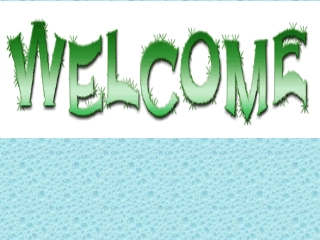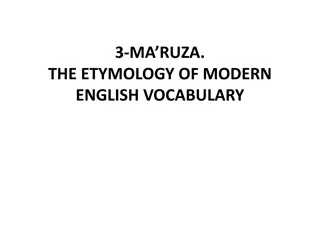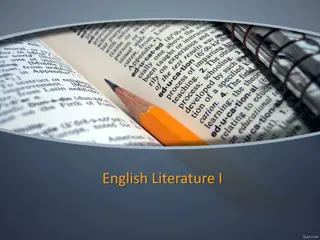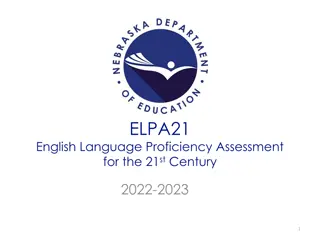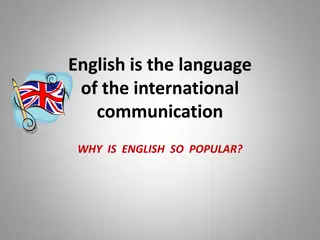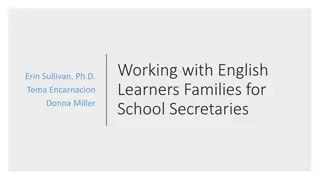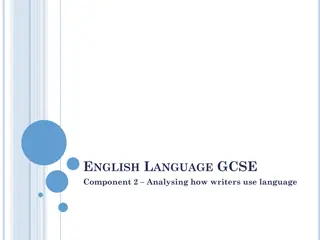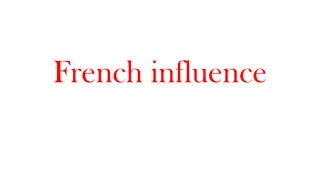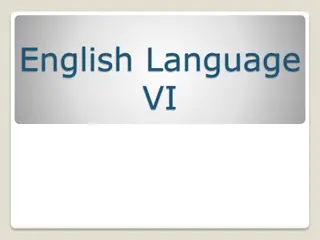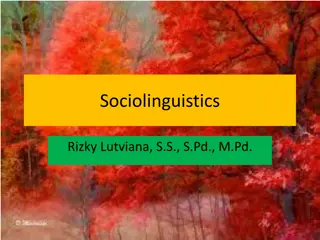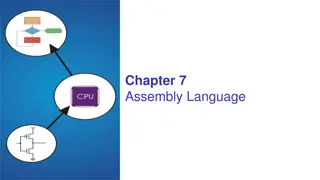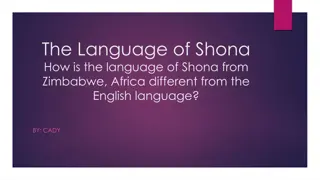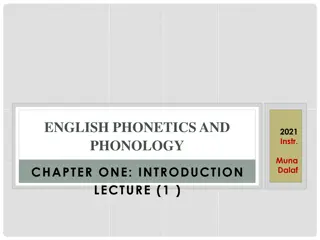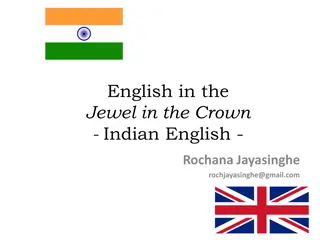
Explore Contrast and Structure in Written Texts
Delve into the use of contrast in descriptions, zooming in on details, tracking links between paragraphs, and understanding the effects of structure on readers. Practice pairing contrasting sentences and sequencing elements of description, all while learning how to write effectively about structure in texts.
Download Presentation

Please find below an Image/Link to download the presentation.
The content on the website is provided AS IS for your information and personal use only. It may not be sold, licensed, or shared on other websites without obtaining consent from the author. If you encounter any issues during the download, it is possible that the publisher has removed the file from their server.
You are allowed to download the files provided on this website for personal or commercial use, subject to the condition that they are used lawfully. All files are the property of their respective owners.
The content on the website is provided AS IS for your information and personal use only. It may not be sold, licensed, or shared on other websites without obtaining consent from the author.
E N D
Presentation Transcript
Language: Lesson 3 Objectives: You will investigate the use of contrast in description. You will learn about zooming in . You will track Links between paragraphs. You will explore the effects of structure on the reader and most will learn how to write independently about the effects of structure.
Question 3 in Paper 1 asks you to comment on a writer s use of structure. You already have some of experience of this in Years 7-9. Talk about: What structure means in relation to a written text. How you might write effectively about structure. How you might refer to evidence when referring to structure. Now watch the short video on narrative structure on Cambridge Elevate.
Pair the six sentences below into 3 contrasting pairs, highlighting the points o:f contrast: A) It was a dark winter s night with only a dim shaft of moonlight to guide the way. B) Soothing waves gently brushed the waiting sand, as families gathered to enjoy the beach. C) It stood alone, neglected and ashamed, with windows smashed and blinded by weeds. D) The warm sun shone brightly, casting its bright rays on the path ahead. E) The house welcomed its visitors, its windows gleaming and lawn manicured. F) The beach was deserted as the towering waves smashed the defenceless sand dunes.
Read the passage from Steinbecks Of Mice and Men and sequence the six elements of description. Two men emerged from the path and came into the opening by the green pool. They had walked in single file down the path, and even in the open one stayed behind the other. Both were dressed in denim trousers and in denim coats with brass buttons. Both wore black, shapeless hats and carried tight blanket rolls slung over their shoulders. The first man was small and quick, dark of face, with restless eyes and sharp, strong features. Every part of him was defined: small strong hands, slender arms, a thin and bony nose. Behind him walked his opposite, a huge man, shapeless of face, with large, pale eyes, with wide, sloping shoulders; and he walked heavily, dragging his feet a little, the way a bear drags his paws. His arms did not swing at his sides, but hung loosely. A) One man walked behind the other. B) Details of clothes. C) Details about the man behind. D) Details of what they carried. E) Two men emerged from the path. F) Details about man in front.
Which of the following students best describes the structure of the extract? Explain your choice. Student A: He tells us about the two men and how they walk together and the describes each one in detail and compares the second man to a bear. Student B: He introduces the two men together and then writes about the similarities between them and then describes each one in detail. Student C: He describes the two men by introducing them together and telling us about similarities between them, before describing each one in detail to show how they contrast with each other.
Similar to film, writers often zoom in and out. Look at the two sequences below and decide with order would be the most effective. Sequence 1 An expanse of sea A distant swimmer Waves hitting the shore The shadow of an approaching shark A crowded beach A close-up of a swimmer Sequence 2 A hospital An empty bed A doctor and nurse talking The waiting room A hospital corridor The reception desk
Read the extract below: The bunk house was a long rectangular building. Inside, the walls were whitewashed and the floor unpainted. In three walls there were small, square windows, and, in the fourth, a solid door with a wooden latch. Against the walls were eight bunks, five of them made up with blankets and the other three showing their burlap ticking. Over each bunk there was nailed an apple box with the opening forward so that it made two shelves for the personal belongings of the occupant of the bunk. And these shelves were loaded with little articles, soap and talcum powder, razors and those Western magazines ranch men love to read and scoff at and secretly believe. And there were medicines on the shelves, and little vials, combs; and from nails on the box sides, a few neckties. Near one wall there was a black cast-iron stove, its stove pipe going straight up through the ceiling. In the middle of the room stood a big square table littered with playing cards, and around it were grouped boxes for the players to sit on.
Now, in relation to the passage you have just read, discuss the following questions: 1) The first sentence starts with a view of the bunkhouse from the outside. Which word in the second sentence tells you this? Track how the writer has structured this description by answering these four questions: What is in the walls? What is against he walls? What is near one wall? What is in the middle of the room? Reread lines 7-10 where he lists the belongings. Rank the reasons in order of merit: To tell us what the men keep in their apple boxes To show that this is the men s home, where they keep all their personal belongings To show how few possessions the men have 2) 3) three
Writing About Structure Read the student response and fill in the gaps Now compare your answers with a partner and discuss as a class.
Read your paper copy of the novellas opening. Now in your groups complete or discuss the following. Your teacher will direct you to an appropriate task: Task 1: Highlight references to the pool and snake Highlight references to the sycamore and leaves Highlight references to the heron Highlight reference to the wind. Highlight references to Lennie by name or pronoun. Task 2: Discuss the following statements: He builds up the scene carefully, detail by detail, showing how things change very slightly, to help the reader picture it. By keeping the focus on the pool, the heron and snake, he is able to show the reader how the scene is disturbed when Lennie appears. He keeps the reader focussed on the pool because this is where Lennie first appears.
Q3) You now need to think about the whole of the source. It is taken from the ending of a novel . How has the writer structured the text to interest you as a reader? You could write about: What the writer focuses you on at the beginning. How and why the writer changes this focus as the extract develops. Any other structural features that interest you. The writer sets the scene in the opening paragraph, giving details of the place, Salinas , and the time of day, late afternoon .
Discuss your responses, then talk about how you might complete the response below: The writer sets the scene in the opening paragraph, giving details of the place and the time of day. In the following paragraphs he develops this scene, describing in detail what can be seen, helping the reader to imagine it. It is not until the fifth paragraph that the writer zooms in on Lennie, showing his actions and behaviour and making the reader wonder what he is up to...
Band 4: The text, about a journey, is structured to also take the reader on a journey: from the general to the specific; from the outside to the inside; from the weather, through the coach, the driver and horses, to the passengers. There is also a constant reminder of the weather which permeates each part the little drips of rain that came through the roof and, later, the rain oozed through the crack in the roof onto Mary s shoulder so the reader is constantly made wet and uncomfortable, just like the passengers. Around the middle of the extract, the outside and the inside are made to coincide when the old man opens the window this also moves the focus of the reader to the inside of the coach. The text narrows down to take the reader from the countryside of Cornwall the wide granite sky and the evening which closed upon the hills , to the inside of Mary Yellan s head as she contemplates the weather and hopes for a momentary trace of blue heaven . Band 3: The main structure of the story, which begins with the weather, moves from the outside with the rain and wind that came in gusts and which includes the driver and horses, to the inside of the coach and the individual characters who are the passengers. The reader is able to understand the extremity of the weather and then go inside to the relative calm and meet the passengers. As the extract develops it changes the focus from the weather to the driver, then the horses, then the coach, then the passengers. The reader s experience narrows down to Mary Yellan, whose thoughts take the reader back to the weather.
Read Source D and complete any two of the tasks outlined below: 1) 2) Which technique does the writer use in this description? Copy and complete the table below, showing different things that the writer contrasts in the description. First Paragraph Second Paragraph Cloaked by darkness Light awoke him Heavy clouds and a sulky moon Eyes, wide and alert 3) What do you notice about the final sentences of each paragraph? What do they make you think and feel? How does the writer use structure this to help make this an piece of description? 4)
Homework- use source D How has the writer structured the text to make it an effective description? You could write about: What the writer focuses you on at the beginning. How and why the writer changes this focus as the extract develops. Any other structural features that interest you.
Plenary Discuss your answers. Discuss key points of your learning and what is meant by the term structure in writing.

